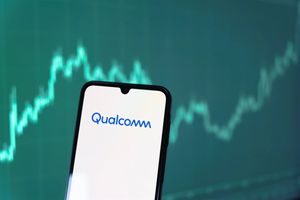
After the collapse of Silicon Valley Bank (NASDAQ: SIVB) a few months ago, regional and larger banks across the United States saw their stocks decline as a systematic reaction to the news. As is a typical procedure, the larger banks responsible for a more significant share of the American consumer's deposits are going through periodic stress tests, whose results have been long awaited by investors to justify moving past perceived risks.
The FED's stress test comprises economic assumptions, such as higher-than-average unemployment or inflation, to test whether banks are appropriately levered and capitalized.
J.P. Morgan Chase & Co. (NYSE: JPM), Wells Fargo & Company (NYSE: WFC), and Morgan Stanley (NYSE: MS) are some of the banks that have recently cleared the FED's robust screening, executives at these firms have decided to reward investors who stuck by the banks during times of uncertainty, so they have raised their quarterly dividend payouts effective next ex-date.
However, two other banks stand to be outliers in these decisions. The Goldman Sachs Group (NYSE: GS) and Citigroup (NYSE: C) are pushed to opposite ends of the dividend change spectrum, as the former made the most significant increment and the latter announced the smallest increment.
Payout Perceptions
Looking at the different payout increment decisions by the previous list of banks, investors can glimpse the relative valuations perceived by insiders and markets alike. JP Morgan executives have decided to raise the stock's dividend payout to $1.05 per quarter, up from $1.00.
This raise would place the annualized stock yield at a more attractive 2.85%, nearer to the historically higher levels of 3.0% to 3.3% that the stock has paid out. What this implies for JP Morgan stock investors, in the sense of history, is that management has placed the new dividend yield at a level to imply some further upside in the price of the stock.
JP Morgan analyst ratings agree with this view, as there is currently a consensus 7.5% upside potential from today's prices, making it a double-digit potential return when investors add the new dividend yield.
Looking at Goldman's decision, the bank that chose to raise its dividend payout by the most significant increment, its new payout of $2.75, would represent a $0.25 increase in dividend per share. On an annualized basis, this new payout would imply a more than 3.0% yield, one of the highest in company history (excluding COVID-19 sell-offs).
As the same logic applies here, the new dividend yield implies that management believes the stock to be undervalued relative to historical prices. Goldman Sachs analyst ratings reflect a similar view; all else the same, this view is amplified relative to JP Morgan's, as the stock carries a consensus 19.0% upside potential.
In this case, what is odd is the similarly high consensus upside potential that analyst ratings see in Citi stock. This bank rolled out the smallest dividend increment, going from $0.51 per share to $0.53. Some may argue that this is a negative implication for investors and valuations. However, the same forensic analysis will reveal that Citi management did not have to increase payouts.
Citi stock sports the highest yield in this group, with a hefty 4.4% annualized accompanied by a consensus 17.0% consensus upside in analyst ratings; this bank is posing the most upside in this round of stress test successes.
Relative Positioning
When looking at the market perception concerning these names, a few things will become apparent for investors to figure out where broader markets are looking for these stocks to go. Citigroup, the most undervalued as far as its dividend yield can tell, is also the most undervalued on a more practical measure.
Carrying a 6.3x price-to-earnings ratio would place the bank below its peers, who trade significantly higher multiples. A low P/E ratio is significant to spot potential undervaluation; however, combining a historically high dividend yield with this low P/E is a reassuring metric to justify higher implied valuations.
On the other hand, Goldman Sachs is trading at a nearly double P/E ratio of 11.8x. A higher valuation comes along with a lower dividend payout, which can make it the less attractive choice compared to Citi.
What investors should remember, however, is that these two companies carry the same percentage potential as far as analyst targets go. In this tie, the difference maker is the market itself.
Since broader markets assign a higher P/E to Goldman, it can be implied that broader markets are willing to pay more for each dollar of current - and future - earnings in the banks, perceiving higher quality when compared to Citi.





